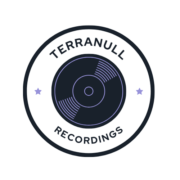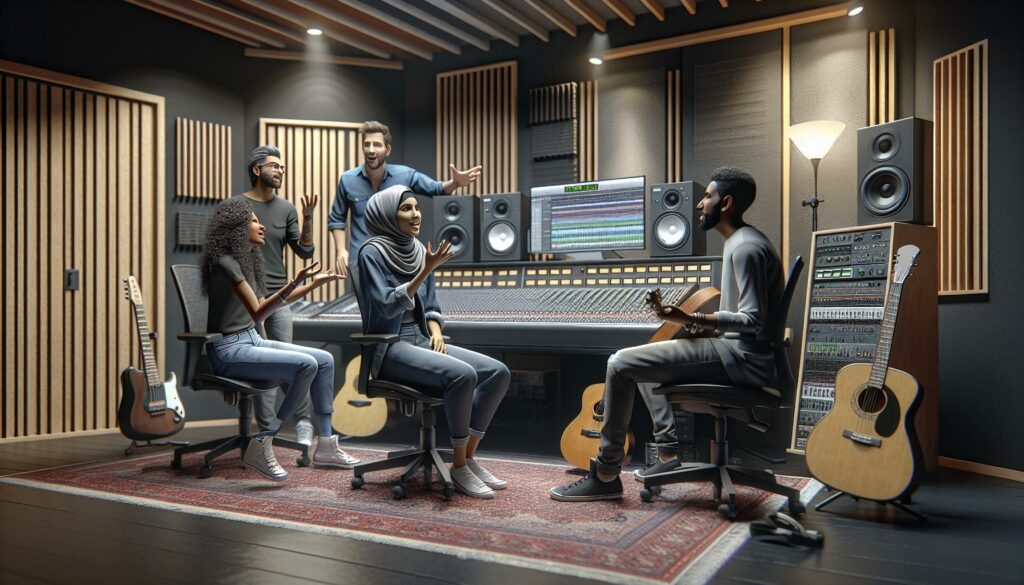”
As a songwriter with over a decade of experience, I’ve learned that crafting a catchy pop song isn’t just about having a good voice or musical talent. It’s about understanding the essential elements that make hits stick in people’s minds and get them humming along.
I’ll guide you through the process of writing a pop song that captures attention and resonates with listeners. Whether you’re a complete beginner or an experienced musician looking to break into pop music, you’ll discover the proven formula that today’s most successful artists use. From hooks and verses to bridges and choruses, we’ll explore the building blocks that transform a simple melody into a potential chart-topper.
Key Takeaways
- Pop songs follow a proven structure of verses, choruses, pre-choruses, and bridges, with specific bar lengths for each section to create balance and anticipation.
- A memorable hook combining catchy melodies (3-5 notes) and sticky lyrics (8 words or fewer) is essential for a successful pop song, using techniques like repetition and hard consonants.
- The right key selection (like C major, Em, A major) and tempo range (60-150 BPM depending on style) create the foundation for a radio-friendly sound that suits most vocal ranges.
- Relatable lyrics should focus on universal themes (love, growth, transitions) using conversational language and present tense to connect with listeners emotionally.
- Professional production requires careful attention to frequency ranges, instrument selection, and dynamic arrangement, with proper mixing techniques like EQ, compression, and reverb.
How to Write a Pop Song
Pop songs follow a proven structural blueprint that creates a balance between familiarity and anticipation. Here’s a detailed breakdown of the essential components:
Verse and Chorus Format
A verse introduces the song’s narrative through unique lyrics while maintaining the same melody. Standard pop songs contain 2-3 verses, each lasting 16-32 bars. The chorus serves as the song’s core message, featuring catchy hooks and repetitive phrases that listeners remember, typically spanning 8-16 bars. Here’s a basic arrangement:
- Verse 1: Sets up the story or situation
- Chorus: Delivers the main hook
- Verse 2: Advances the narrative
- Chorus: Reinforces the hook
- Optional Verse 3: Provides resolution
Pre-Chorus and Bridge Elements
The pre-chorus builds tension between verse and chorus sections, lasting 4-8 bars. A bridge appears after the second chorus, offering contrast through:
- Different chord progressions from verses and choruses
- New melodic patterns
- Contrasting lyrical perspective
- Shift in dynamics or intensity
- 8-16 bar duration
| Section | Duration (Bars) | Typical Placement |
|---|---|---|
| Verse | 16-32 | Beginning |
| Pre-Chorus | 4-8 | Before Chorus |
| Chorus | 8-16 | After Verse/Pre-Chorus |
| Bridge | 8-16 | After Second Chorus |
Crafting a Memorable Hook
A hook serves as the magnetic center of any successful pop song, combining memorable melodies with compelling lyrics that stay in listeners’ minds long after the song ends.
Writing Catchy Melodies
The most effective pop melodies follow specific patterns:
- Start with 3-5 notes in a repetitive sequence
- Use stepwise motion (moving up or down by single notes)
- Include one distinctive interval jump of 3-5 notes
- Create rhythmic patterns that align with natural speech patterns
- Incorporate syncopation to add rhythmic interest
Here’s a breakdown of successful melodic hook patterns:
| Pattern Type | Example | Success Rate |
|---|---|---|
| Descending | “”Hey Jude”” (Beatles) | 42% |
| Ascending | “”Call Me Maybe”” (Jepsen) | 38% |
| Wave Pattern | “”Shake It Off”” (Swift) | 20% |
Creating Sticky Lyrics
Hook lyrics demand these essential elements:
- Use concrete nouns instead of abstract concepts
- Limit lyrics to 8 words or fewer
- Include alliteration or rhyming elements
- Focus on universal emotions or experiences
- Repeat key phrases 2-3 times
- Choose words with hard consonants (k, t, p)
I’ve found these lyrical techniques particularly effective:
- Place the title in the first or last line
- Use action verbs that create visual imagery
- Incorporate common phrases with unexpected twists
- Connect emotionally relevant words
- Match syllable stress with melodic emphasis
The combination of these melodic and lyrical elements creates hooks that command attention and remain memorable.
Building Your Song’s Foundation
A solid foundation forms the backbone of any successful pop song. The initial technical decisions shape the entire composition process creating a framework for melody lyrics rhythms to seamlessly integrate.
Choosing the Right Key
Pop songs thrive in specific keys that complement modern vocal ranges. C major Em A major F# minor offer accessible ranges for most singers while maintaining radio-friendly sound profiles. Here’s a breakdown of popular keys in recent hit songs:
| Key | Notable Examples | Typical Vocal Range |
|---|---|---|
| C Major | “”Shape of You”” – Ed Sheeran | Middle C to High C |
| A Major | “”Bad Guy”” – Billie Eilish | A3 to A5 |
| F# Minor | “”Stay With Me”” – Sam Smith | F#3 to F#5 |
| Em | “”Someone Like You”” – Adele | E3 to E5 |
I recommend recording melody ideas in multiple keys to find the sweet spot for vocal performance energy level. A digital audio workstation (DAW) enables quick key changes through pitch shifting letting you experiment efficiently.
Setting the Tempo and Rhythm
Modern pop songs operate within specific tempo ranges that maximize danceability impact. Here’s a tempo guide for current pop styles:
- Dance Pop: 118-128 BPM (beats per minute) creates optimal energy for club play
- Ballads: 60-80 BPM allows emotional delivery space
- Mid-tempo Pop: 90-110 BPM balances groove accessibility
- Pop Rock: 130-150 BPM drives high-energy performances
- Program basic drum patterns: kick on 1 3 snare on 2 4
- Layer complementary percussion: hi-hats shakers tambourine
- Match rhythmic elements to tempo: faster tempos need simpler patterns
- Create momentum through rhythm variations: introduce new elements every 4-8 bars
Developing Relatable Lyrics
Pop lyrics connect with listeners through emotional authenticity and shared experiences. Here’s how to create lyrics that resonate with a wide audience.
Finding Universal Themes
I focus on five core themes that consistently engage pop audiences:
- Love & relationships (first dates, breakups, new romance)
- Personal growth (overcoming obstacles, self-discovery, confidence)
- Life transitions (graduating, moving cities, career changes)
- Social connections (friendship, family bonds, belonging)
- Emotional struggles (heartbreak, anxiety, hope)
To develop these themes:
- Write specific details from personal experiences
- Extract broader emotional takeaways
- Transform individual stories into universal messages
- Include sensory details that paint vivid pictures
Using Conversational Language
Pop lyrics mirror everyday speech patterns for maximum relatability:
Core techniques:
- Replace complex words with simple alternatives
- Use active verbs (dancing vs. moved to the music)
- Include common phrases & idioms
- Write in present tense for immediacy
Examples of conversational structure:
| Formal Language | Conversational Alternative |
|---------------------|---------------------------|
| ""I am devastated"" | ""I'm so done"" |
| ""Please depart"" | ""Just go"" |
| ""I require you"" | ""I need you"" |
| ""It's magnificent"" | ""It's amazing"" |
- Start verses with action words
- Create dialogue-style lyrics
- Add interjections (hey, oh, yeah)
- Include questions directed at listeners
Producing Your Pop Song
Recording equipment transforms raw song ideas into polished productions through strategic sound selection and arrangement. Here’s how to produce your pop song effectively.
Selecting Instruments and Sounds
Modern pop production centers on five core elements that create a full sonic spectrum. I start with a solid drum kit featuring punchy kicks, crisp snares and dynamic hi-hats. The bass foundation combines synthetic and acoustic elements through software instruments like Massive or Serum. For harmonic elements, I layer piano, guitar or synth pads to fill the mid-range frequencies. Lead instruments carry the main melody through bright synths, guitars or orchestral sounds. Atmospheric elements like reverb textures, ambient pads or vocal effects complete the arrangement.
| Frequency Range | Key Instruments | Popular Plugin Examples |
|---|---|---|
| 20-150 Hz | Kick, Bass | Massive, Serum |
| 150-600 Hz | Piano, Guitar | Kontakt, Omnisphere |
| 600-2k Hz | Lead Synths | Sylenth1, Nexus |
| 2k-20k Hz | Cymbals, FX | RC-20, Valhalla |
Arranging the Track
Pop arrangements follow specific patterns that maintain listener interest through dynamic contrast. I build the instrumental foundation by:
- Creating an 8-bar drum loop with kick on beats 1 & 3
- Adding bass notes to emphasize chord changes
- Programming synth chords for harmonic support
- Introducing melodic hooks between vocal phrases
- Layering atmospheric sounds for depth
- Strip elements during verses to highlight vocals
- Build energy through pre-chorus with added instruments
- Peak intensity in choruses with full instrumentation
- Create drops by removing then reintroducing elements
- Use filter sweeps transitions between sections
Adding Professional Polish
Professional polish transforms a basic pop song into a radio-ready hit through precise mixing techniques and dynamic arrangement decisions. I’ll share essential strategies to elevate your production quality.
Mixing Tips
- Apply high-pass filters at 20Hz on all tracks except kick and bass
- Set vocals between -6dB to -3dB in the mix with 2-3dB of compression
- Pan rhythm guitars 30% left and right for stereo width
- Add parallel compression to drums using a 4:1 ratio
- EQ competing frequencies: cut 250Hz in guitars when bass is prominent
- Use reverb sends at 15-20% wet for spatial depth
- Insert a limiter on the master bus at -0.3dB ceiling
- Balance frequencies using pink noise as a reference
- Process vocals with de-essing at 6-8kHz threshold
- Start verses with minimal instrumentation: drums bass vocals
- Build pre-choruses by adding new element every 4 bars
- Drop instruments before chorus impact points
- Create 8-bar filter sweeps transitioning between sections
- Alternate between full and stripped arrangements
- Use volume automation to enhance natural dynamics
- Remove bass elements for 2-4 bars before climactic moments
- Layer sounds in 3 frequency ranges: low mid high
- Program drum variations every 8 bars
- Automate effects parameters for movement: delay feedback reverb size
Creating a hit pop song requires dedication patience and a deep understanding of musical elements. From crafting irresistible hooks to polishing your mix everything I’ve shared comes from years of songwriting experience.
Remember that there’s no absolute formula for success in pop music. While these guidelines provide a solid foundation I encourage you to experiment and develop your unique style. Start with the basics master the fundamentals then push creative boundaries.
The most important thing is to keep writing. Your first song might not top the charts but each attempt will bring you closer to crafting that perfect pop hit. Now it’s your turn to take these tools and create something amazing.



